If you’ve been bass fishing long, you’ve undoubtedly fished a plastic worm. But we still get a lot of questions about what worms to use when and where you should fish the different ones. While there are no hard and fast rules that say you can only catch bass on a certain bait fished a certain way at a certain time, there are some guidelines that might help those in question.
FLW Tour pro Terry Bolton, has been known for his worm fishing on offshore ledges for decades. But when the fishing gets tough in the middle of summer on Kentucky Lake, Bolton shines as an accomplished worm fisherman in many different situations. He talked with me recently about his 5 favorite plastic worms for fishing deep for summer bass. And then went into great detail about where he fishes them, and how he gets it done.
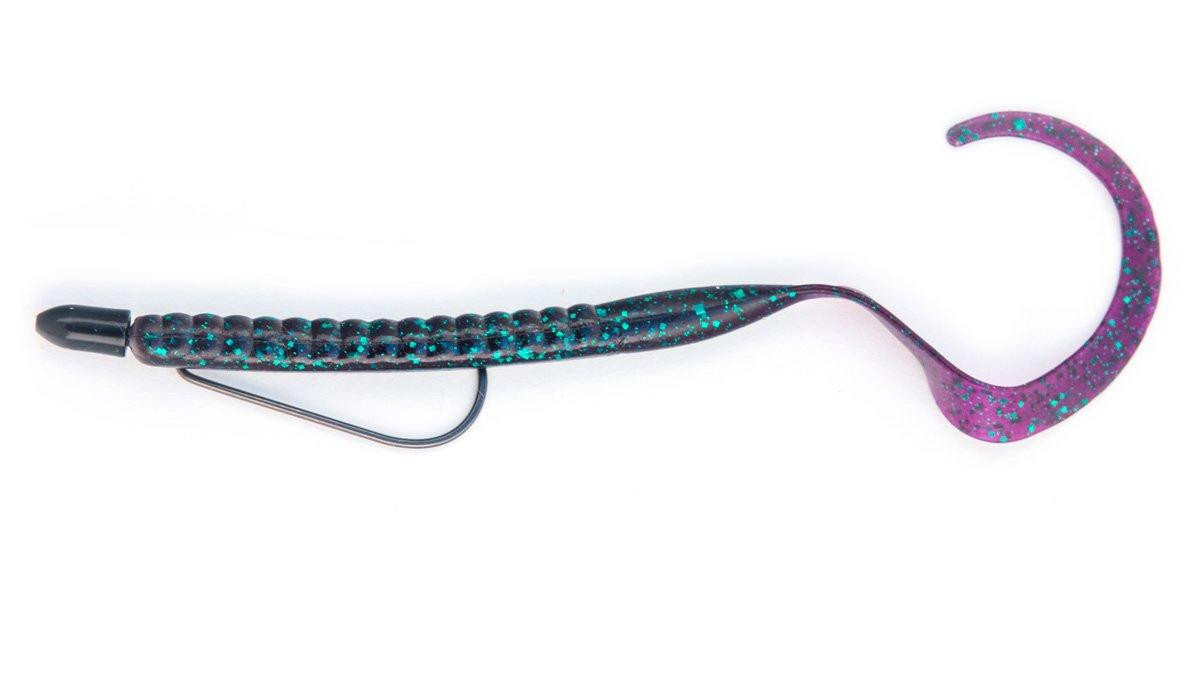
1. Big ribbon-tail worm / Early summer ledges
“The Zoom Ol’ Monster is a staple of ledge fishing,” Bolton said.
Bolton first reaches for a big ribbon tail worm when the fish first start grouping up on offshore structure after the spawn. When they get really grouped up, it’s a fish catcher and it will catch big fish too.
He fishes these worms with 3/8-ounce and 1/2-ounce weights. He lets depth dictate weight size. If he fishes 0-15 feet, he will use the 3/8 ounce, and if he fishes 15-30 feet, he will use the 1/2 ounce. He chooses a 5/0 or 6/0 VMC Worm Hook and 12-pound Sufix Fluorocarbon line because that smaller diameter line gives the worm a better fall and action.
“I will fish it with two retriever,” Bolton said. “Early in the summer, I will fish it more with a drag along the bottom. Once they get more into their summer feeding patterns, I will hop it a lot more. I will still let the fish tell me which way they want, though. I will drag it some and hop it some and see how I get more bites and stick with that. But it seems like hopping works better as they get more rested up from the post spawn funk.”
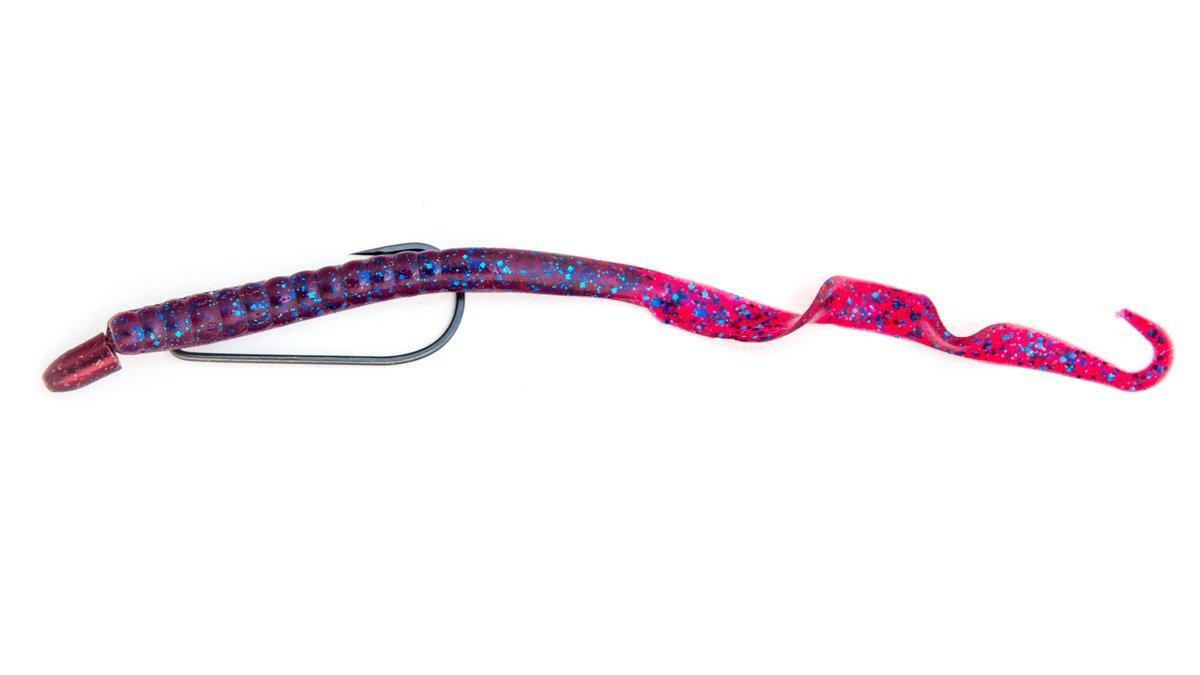
2. Small ribbon-tail worms / Late summer cover
Fish can get pressured and move shallower throughout the summer and start relating more to available cover to be around more oxygen, and the smaller worm gets a lot more bites as you get into the hotter, tougher parts of summer bass fishing.
He will uses it with a 3/8 or 5/16-ounce tungsten bullet sinker when the fish are around deep cover like brush piles and stumps. I will go to a 3/16-ounce when I move shallower or fish sparse grass like milfoil, hydrilla, eel grass, etc. When he gets around cover, he’ll use a heavier line like 14 to 17-pound Sufix fluorocarbon.
“I like a Zoom Mag II worm. When I feel a piece of cover, I like to pull it up on a limb or up on the edge of the cover, then give it slack and let it go back to the bottom,” he said. “It’s almost like deep water flipping. You’re working the worm up and down in a deep under water bush. When I know they are in cover like that I will go to a heavier line because a big fish will break you off see-sawing in cover like that.”
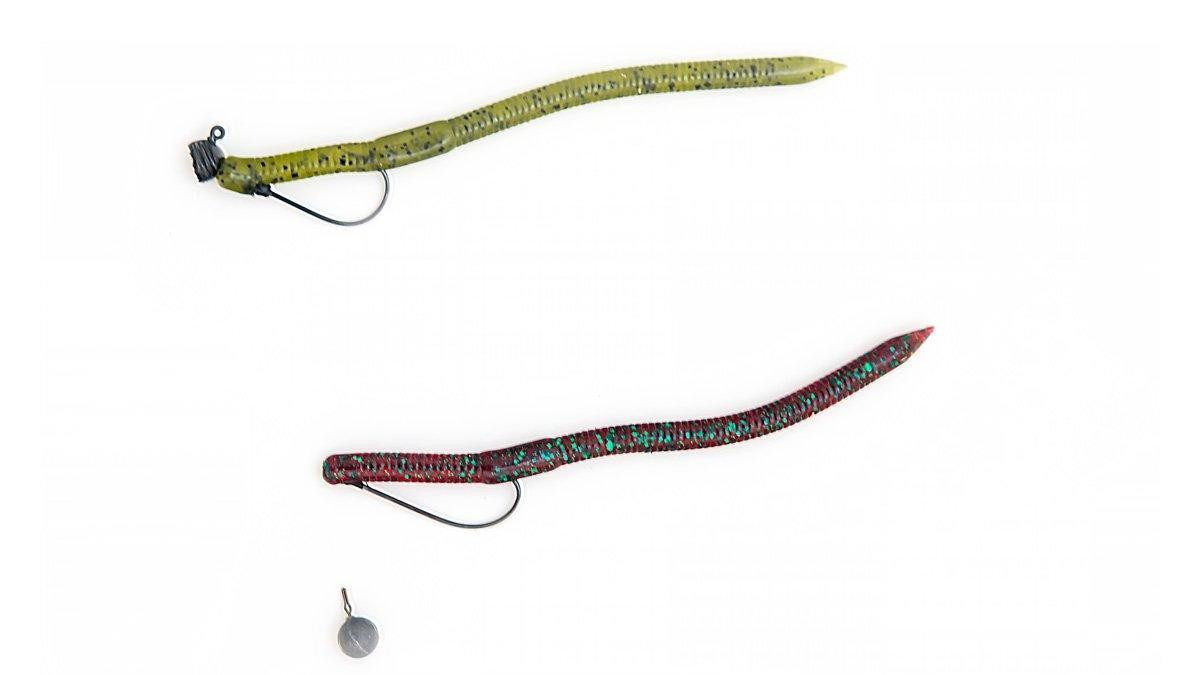
3. Straight-tail worm / Shaky head and drop shot
Usually the shaky head comes out when Bolton is fishing points or the shade of deep boat docks. The drop shot is for deep fish when the schools have been pressured or if the water is real clear. He will throw a shaky head some on a ledges, but mostly he fishes it from 1-15 feet. As the fish get out deeper and pressured, he goes to the drop shot to reach those deep fish more effectively.
When he moves shallow, he will often go to a much lighter shaky head like a 1/8- or 1/16-ounce head for a real slow natural fall. It’s effective from the spawn to the blazing heat of summer.
For the drop shot, he usually goes with a 1/4-ounce VMC tungsten hook with a Spin Shot drop shot hook. If he’s fishing really deep or in heavy current, he will go up to a 3/8-ounce weight and go with a light-wire, straight-shank hook to Texas rig the drop shot worm. He also does that if fishing around brush piles or other wood cover.
His worm of choice lately has been the Zoom Swamp Crawler or Magnum Swamp Crawler.
“With a shaky head, I’m always dragging it,” Bolton said. “It seems like it doesn’t get many bites when it comes off the bottom. With a drop shot, I like to drag it and then let it sit for a few seconds before I move it a little more. I try not to overwork it. If I feel it get up next to something, I will leave the worm a little longer. I’ve seen days where they wanted it dragged and days where they just wanted it sitting there.”
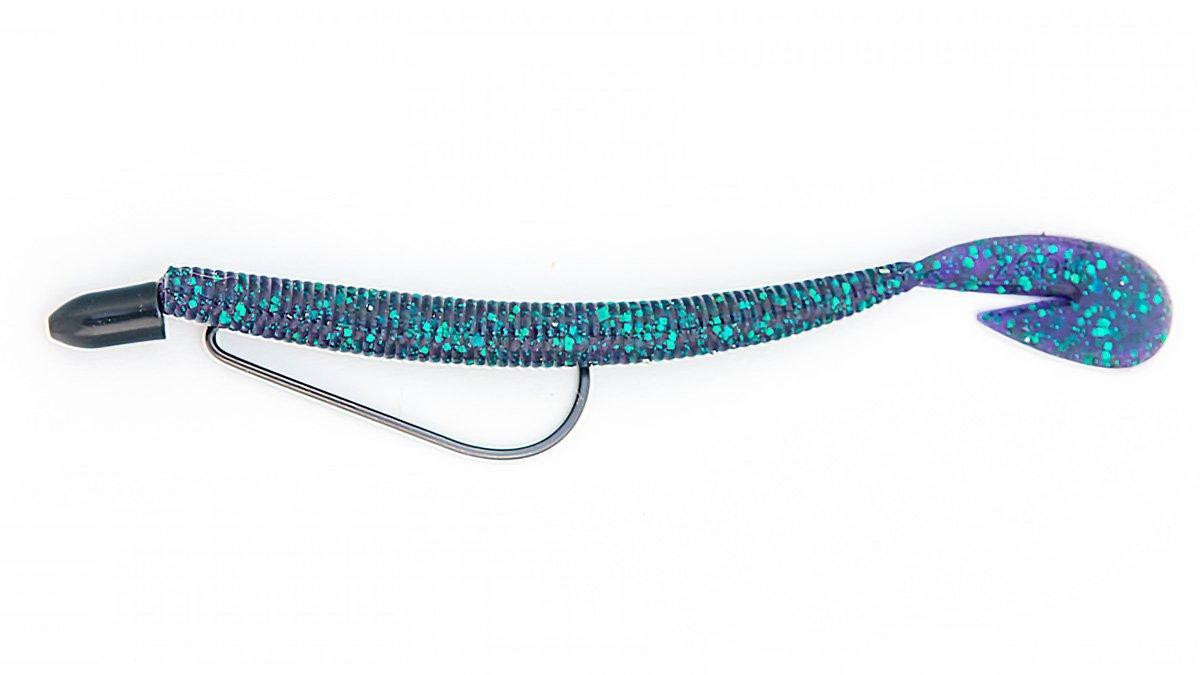
4. Vibe worm / hopping worm for suspenders
Most people think a vibe worm like the Zoom Speed Worm is only a shallow worm, but Bolton will pair it with a 1/2-ounce bullet weight and hop that worm. He gets a reaction and can more aggressively fish the worm to trigger bites. He likes a 5/0 hook with 12-14 pound fluorocarbon on that worm.
“You can get some bites pulling it along on the bottom, but it seems like that bait really shines when that tail is thumping up and down on a lift and drop,” Bolton said.
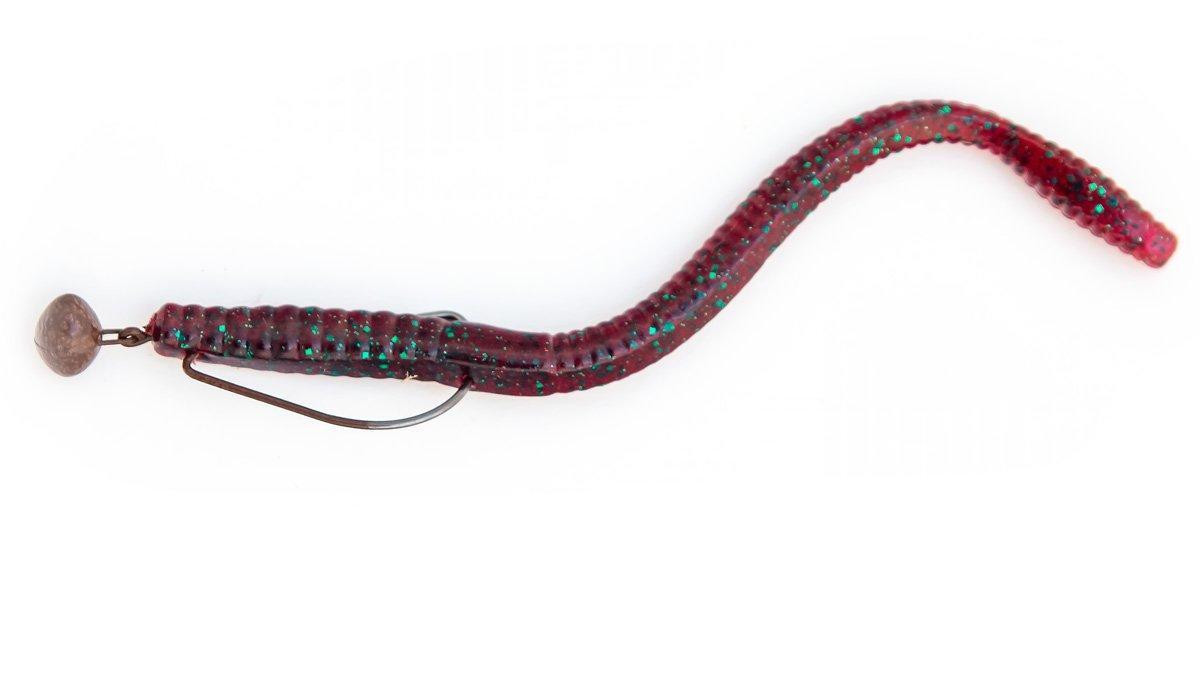
5. Big straight tails or stickbaits / rocking pressured bass
Bolton likes to fish a Zoom Magnum Trick Worm on a 3/4-ounce VMC Swinging Rugby head, and fish it in that 15 to 25-foot depth range. He reaches for this worm and head combo when he’s fishing groups of fish out deep that have been heavily pressured and seen everything else out there. He still wants to give them a subtle action but with a big profile.
“I like to ‘count rocks’ with a Zoom Magnum Trick Worm on a Swinging Rugby Head,” Bolton said. “By that I mean I will put my rod to the side, and pull it an inch at a time, trying to feel every individual rock. Something about that painful slow presentation on those pressured deep bass that makes that rig irresistible to them.”
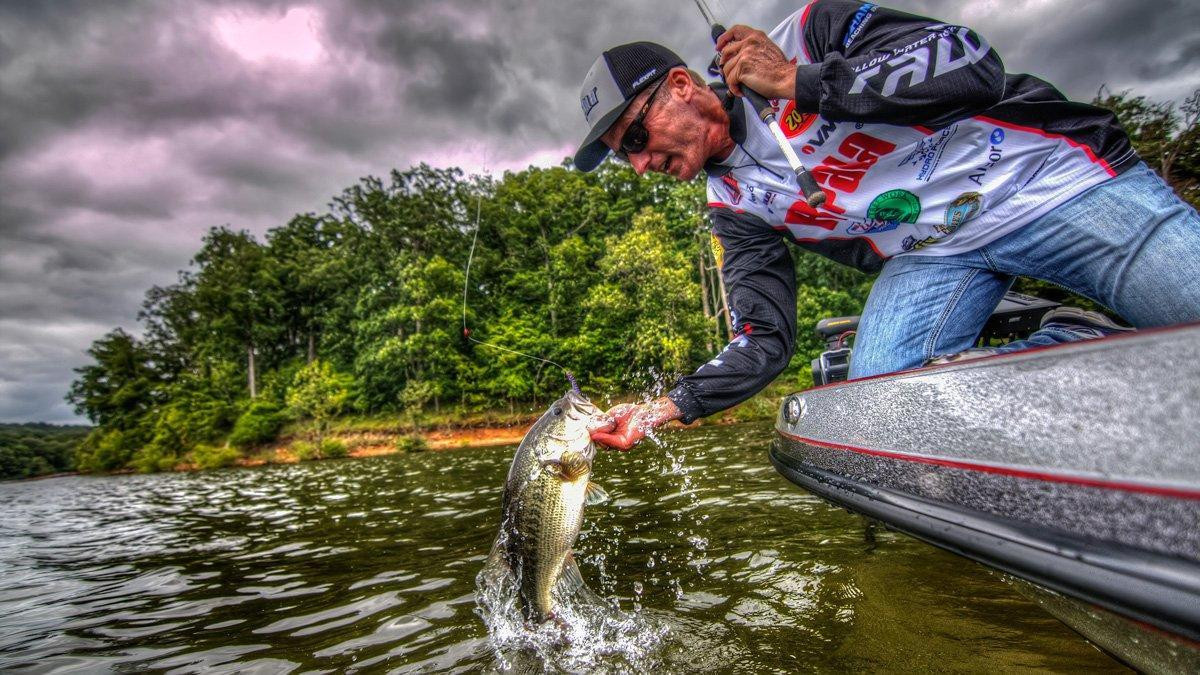
Tackle for summer worm fishing
For rods, Bolton prefers a 7-foot medium-heavy Custom Speed Stick from Lew’s as his rod of choice for baitcasting gear. He likes a 7-foot Team Lew’s Medium power rod for spinning applications.
He will use a high-speed 7.5:1 Lew’s Custom Pro Speed Spool baitcaster reel for fishing a worm, so he can take up a lot of slack quickly as he works a worm with his rod and when he gets a bite. For spinning reels, he uses a Lew’s Custom Pro Speed Spin in the 3000 size because of the larger spool that makes your line a little more manageable.
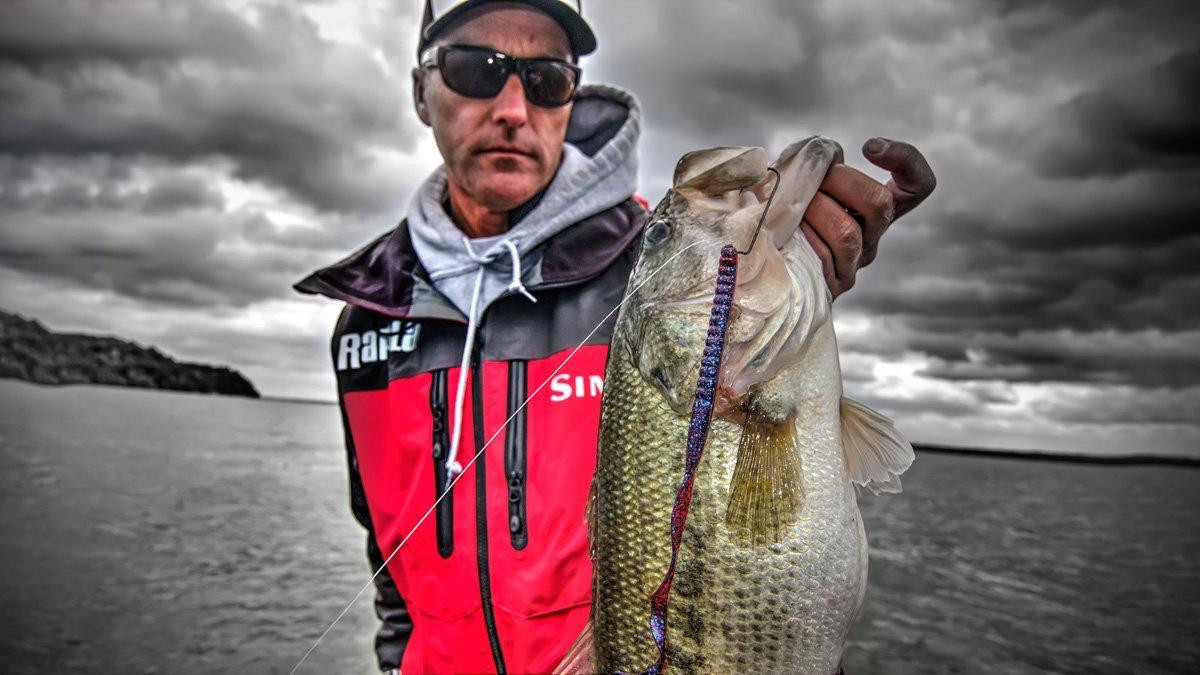
Other Considerations
“The lighter the weight you can use the better,” Bolton said. “You need to stay in contact with your bait, so as you go deeper you might need a heavier weight to stay on bottom. But a lighter weight makes the worm more natural, and it will be less snaggy. But I tell everyone to experiment with weights. A lighter weight makes you slow down. A heavier weight lets you fish faster. So play with your weight sizes in conjunction with your retrieves.
“I’ll start throwing a worm in April around the spawn with Zoom Trick Worms, but I really call July “worm month” because it’s hot, and fishing gets tough. And a worm will always get you a bite. When the water is cold, it’s harder to get a bite on a worm, but when the water is blazing hot, they will still bite it. I will fish it all the way through fall until the water gets down in the low 60s. Then other presentations become more effective again.”











